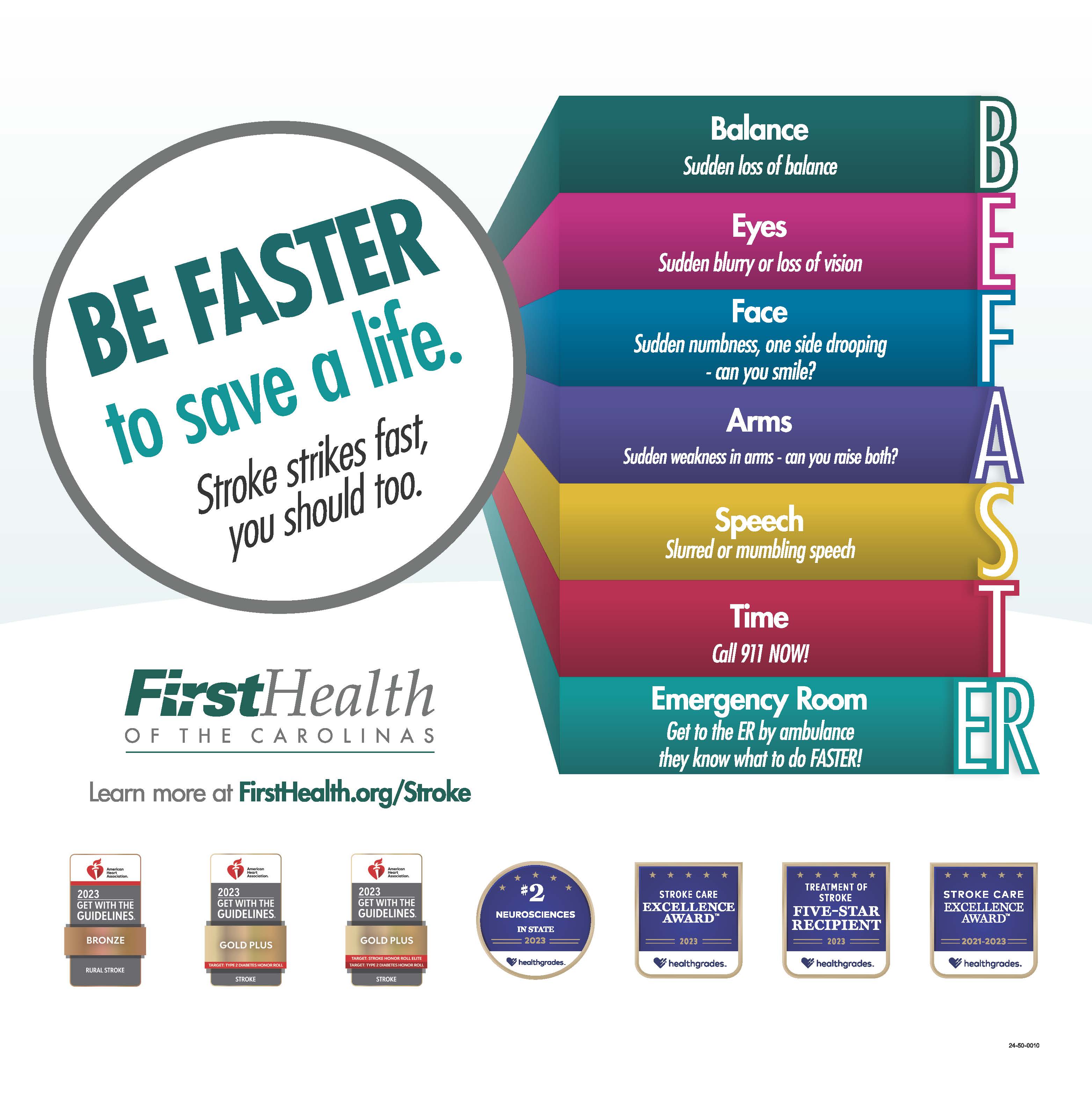Award-Winning Care
Moore Regional Hospital
- DNV Healthcare USA Inc. Primary Stroke Center Certification
- Get With The Guidelines® Target - Stroke Gold Plus with Honor Roll Elite
- Get With The Guidelines® Target: Type 2 Diabetes Honor Roll
- Get With The Guidelines® – Rural Stroke SILVER
- Get With The Guidelines® - Rural Stroke BRONZE
Moore Regional Hospital - Richmond
- DNV Healthcare USA Inc. Acute Stroke Center Certification
- Get With The Guidelines® Target - Stroke Silver Plus
- Get With The Guidelines® Target - Type 2 Diabetes Honor Roll
- Get With The Guidelines® - Rural Stroke BRONZE
Moore Regional Hospital - Hoke
- DNV Healthcare USA Inc. Acute Stroke Center Certification
- Get With The Guidelines® Target - Stroke GOLD PLUS
- Get With The Guidelines® Target - Type 2 Diabetes Honor Roll
Montgomery Memorial Hospital
- DNV Healthcare USA Inc. Acute Stroke Center Certification
- Get With The Guidelines® - Rural Stroke BRONZE
Hospital Compare has information about the quality of care at more than 4,000 Medicare-certified hospitals across the country. You can use Hospital Compare to find hospitals and compare the quality of their care.
FirstHealth of the Carolinas is dedicated to the evaluation, treatment, and prevention of ischemic strokes, hemorrhagic strokes, and transient ischemic attacks. Through an interdisciplinary team approach, FirstHealth works toward determining the etiology and correct emergency treatment, as well as follow up care to achieve the best clinical outcomes. FirstHealth of the Carolinas is devoted to providing evidence-based quality stroke patient care to its local population of retirement communities and our state’s distinct “Stroke Belt” population.
Know the Signs of Stroke
 BE FAST to recognize the signs of stroke
BE FAST to recognize the signs of stroke
B - Balance: Is there a sudden loss of balance or difficulty walking?
E - Eyes: Is there sudden blurred or double vision, or loss of vision in one or both eyes?
F - Face: Is there suddenly an uneven smile or drooping of one side of the face?
A - Arms: Is there a sudden weakness, downward drift or numbness of one arm?
S - Speech: Is the speech suddenly slurred or garbled? Is the person able to repeat the sentence, 'Today is a sunny day?'
T - Time: Call 911 quickly if one or more of these signs are present.
Know the Risk Factors
Some stroke risk factors are out of our control, like a family history of stroke or age. If you know the risk factors that you can manage, improve and eliminate then you can help to prevent stroke.
- High blood pressure
- Smoking
- Diabetes
- High cholesterol
- Poor diet
- Physical inactivity
- Excessive alcohol intake and drug use
There are also ways to lower your risk of having a stroke. The American Heart Association has defined ideal cardiovascular health based on seven risk factors -- Life's Simple 7 -- that people can improve through lifestyle changes including the following:
- Stop smoking
- Eat better
- Get active
- Lose weight
- Manage blood pressure
- Control cholesterol
- Reduce blood sugar
Stroke Support Groups
FirstHealth Stroke Support Group brings people together to discuss and learn from each other, to share helpful hints and to encourage those who face stroke-related problems. Call (910) 715-5266 for more information.